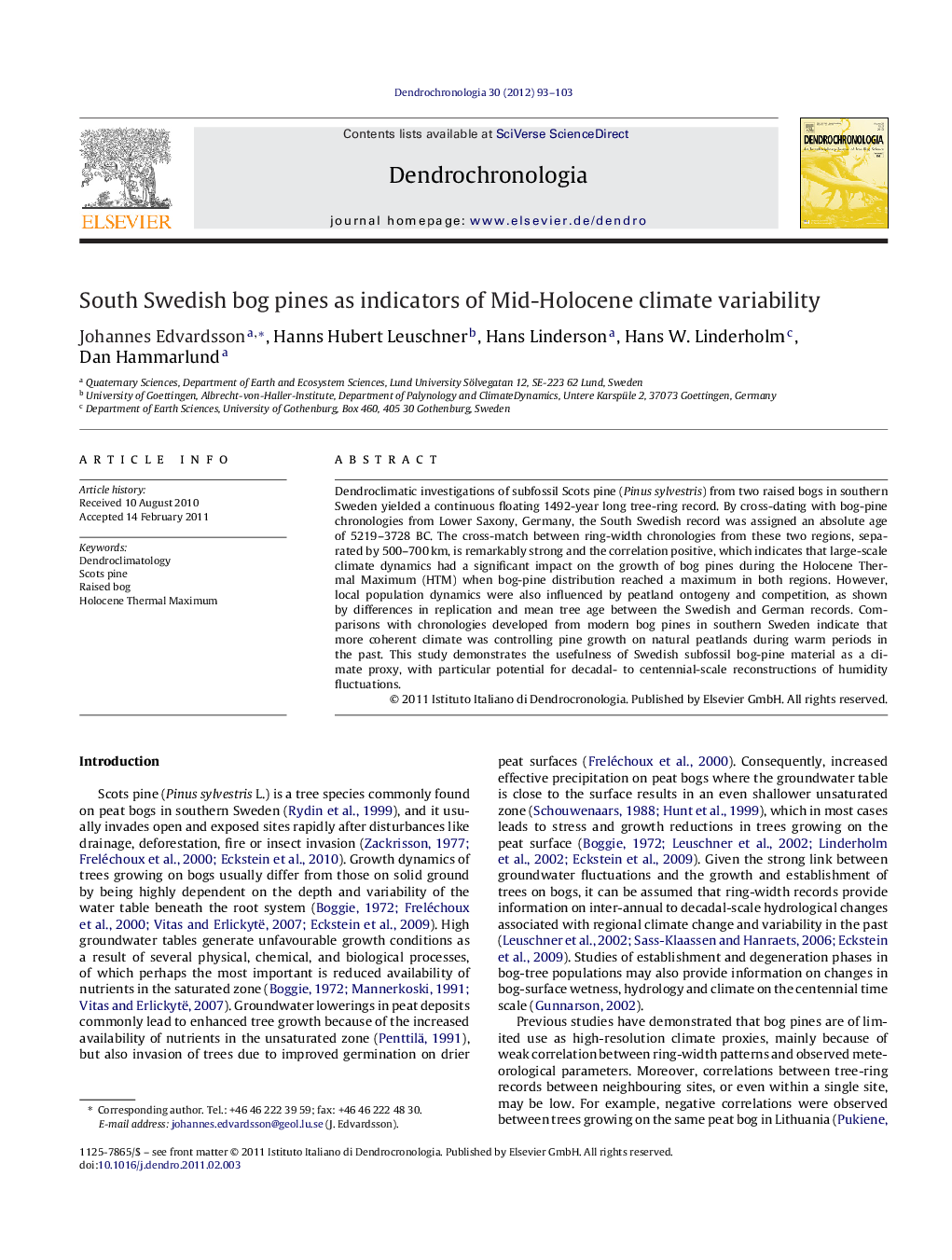| Article ID | Journal | Published Year | Pages | File Type |
|---|---|---|---|---|
| 85775 | Dendrochronologia | 2012 | 11 Pages |
Dendroclimatic investigations of subfossil Scots pine (Pinus sylvestris) from two raised bogs in southern Sweden yielded a continuous floating 1492-year long tree-ring record. By cross-dating with bog-pine chronologies from Lower Saxony, Germany, the South Swedish record was assigned an absolute age of 5219–3728 BC. The cross-match between ring-width chronologies from these two regions, separated by 500–700 km, is remarkably strong and the correlation positive, which indicates that large-scale climate dynamics had a significant impact on the growth of bog pines during the Holocene Thermal Maximum (HTM) when bog-pine distribution reached a maximum in both regions. However, local population dynamics were also influenced by peatland ontogeny and competition, as shown by differences in replication and mean tree age between the Swedish and German records. Comparisons with chronologies developed from modern bog pines in southern Sweden indicate that more coherent climate was controlling pine growth on natural peatlands during warm periods in the past. This study demonstrates the usefulness of Swedish subfossil bog-pine material as a climate proxy, with particular potential for decadal- to centennial-scale reconstructions of humidity fluctuations.
